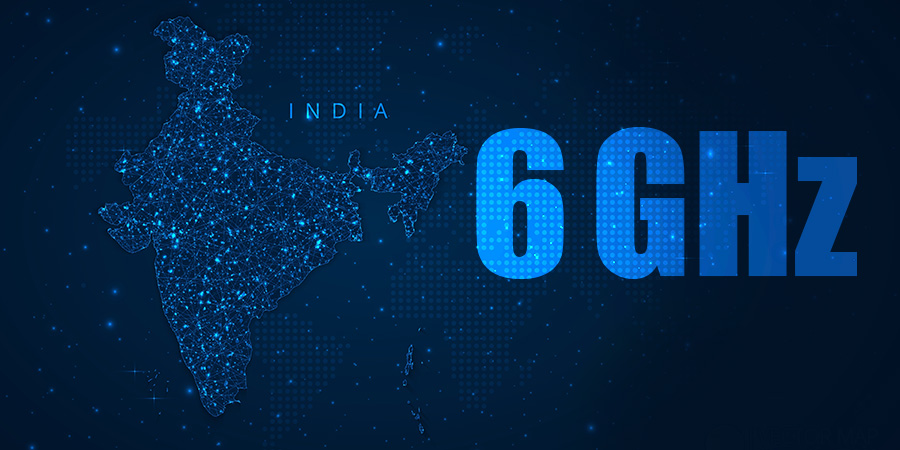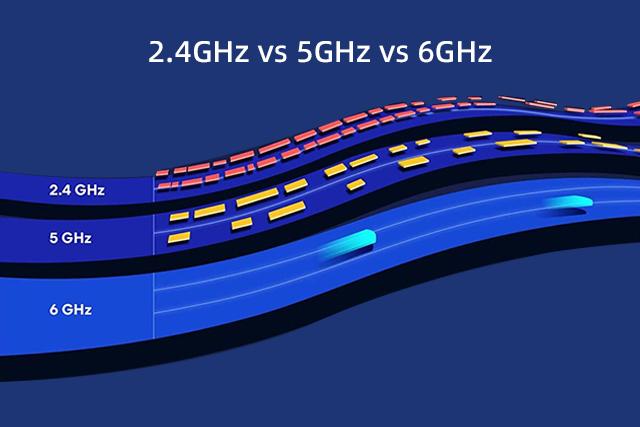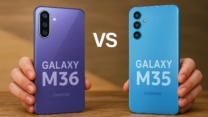
India’s 6GHz Wi‑Fi: Why Telecom Giants Are Worried
India is on the verge of unlocking a massive upgrade in internet connectivity. The Department of Telecommunications (DoT) has proposed to delicense the lower part of the 6GHz band (5.925–6.425 GHz) for low-power indoor and very-low-power outdoor use, bringing Wi‑Fi 6E and Wi‑Fi 7 support a step closer to reality.
While this is great news for consumers and broadband users, it’s also stirring controversy—India’s major telecom companies are not happy, and here’s why.
🚀 Why the 6GHz Band Is a Game Changer
The 6GHz band brings a clean, wide, and high-performance frequency range for Wi-Fi. Compared to older bands (2.4GHz and 5GHz), this new section offers:
- Massive bandwidth: Supports faster speeds—up to 9.6 Gbps with Wi‑Fi 6E and even more with Wi‑Fi 7
- Low interference: Because it’s freshly opened, the band is much cleaner and more stable
- Lower latency: Ideal for gaming, streaming, smart homes, and real-time apps
- Room for more devices: Crucial for homes with many smart gadgets
In other words, this band is tailor-made for high-performance internet in 2025 and beyond.
⚖️ The Conflict: Why Telecom Giants Are Protesting
Indian telecom operators—especially Jio, Airtel, and Vodafone Idea—are opposing the move to open this frequency band for unlicensed use.
Their Argument:
- Lost Revenue Opportunity: Telcos argue that this premium band should be auctioned, not given away for free. They see this as a potential revenue stream for future 5G Advanced or 6G mobile networks.
- Unfair Advantage to ISPs: If ISPs and Wi-Fi service providers can use it freely, telecoms fear losing market share in indoor high-speed data usage, especially in urban areas where fiber-backed Wi-Fi could dominate.
- Network Interference Risk: Some telcos claim that widespread unregulated use could cause interference or overlap with licensed operations (though technically low-power indoor Wi-Fi poses minimal risk).
Counterpoint:
Global regulators including the U.S., UK, South Korea, EU, and Australia have already opened this band for Wi-Fi use without auctions. The logic is that Wi-Fi is a public utility, and freeing up spectrum helps more people connect faster without overloading cellular towers.
India now seems to be following this consumer-first path—but with pushback from big mobile players.
📊 Comparing Wi‑Fi Bands
| Feature | 2.4GHz | 5GHz | 6GHz (New) |
|---|---|---|---|
| Speed | ~100 Mbps max | ~1 Gbps max | 9.6 Gbps or higher |
| Channels | Crowded, few | Moderate | Wide, clean |
| Latency | High | Medium | Very low |
| Range | Longest, good through walls | Medium | Shorter, less wall penetration |
| Use Case | Browsing, IoT | Streaming, Gaming | VR, 8K, low-lag apps |
📅 When Will This Be Available?
- Current Draft Status: As of June 2025, the draft policy is under review after public consultation.
- Expected Final Approval: Likely by end of June or July 2025, with actual consumer devices ready to utilize it by late 2025.
- Upper Band (6.425–7.125 GHz): Still reserved for future 5G/6G use; not yet open to public or unlicensed use.
So for now, only the lower 500 MHz chunk is being freed.
🛒 Planning to Buy a 6GHz-Ready Router? Here’s What to Look For
To take full advantage of 6GHz Wi-Fi when it goes live, your router must meet certain hardware standards—not all current models will support it.
✅ Hardware Features to Check Before Buying:
- Tri-band support: Must support 2.4GHz + 5GHz + 6GHz simultaneously
- Wi‑Fi 6E or Wi‑Fi 7 certification: Wi‑Fi 5/6 routers do not support the new 6GHz band
- Support for WPA3 encryption: Ensures secure communication on newer bands
- OFDMA & MU-MIMO: Advanced technologies that enable faster and more efficient connections across multiple devices
- Mesh compatibility: If you have a large home or thick walls, mesh-ready hardware will help distribute the signal
- Firmware readiness for India: Ensure your router’s regional firmware will unlock the 6GHz band once India officially enables it
⚠️ Reminder: Not all Wi‑Fi 6E/7 routers sold abroad will have 6GHz enabled by default in India. Look for India-certified versions or wait for firmware updates.
🧠 Final Words
India’s decision to open part of the 6GHz spectrum marks a new chapter in digital connectivity. For consumers, it promises faster Wi-Fi, better stability, and real readiness for next-gen tech like AR/VR, 8K streaming, and cloud gaming.
At the same time, it’s creating friction with India’s powerful telecom lobby. As the nation aims to balance consumer interest vs spectrum monetization, the coming months will reveal how boldly India pushes forward.
If you’re planning to upgrade your home network, just make sure your router is tri-band, Wi-Fi 6E or 7 certified, and future-proofed for when the 6GHz green light is finally official.














согласовать перепланировку нежилого помещения [url=http://www.pereplanirovka-nezhilogo-pomeshcheniya9.ru]http://www.pereplanirovka-nezhilogo-pomeshcheniya9.ru[/url] .
услуги мини экскаватора [url=https://arenda-mini-ekskavatora-v-moskve-2.ru/]услуги мини экскаватора[/url] .
перепланировка нежилого помещения [url=http://pereplanirovka-nezhilogo-pomeshcheniya11.ru/]перепланировка нежилого помещения[/url] .
мини экскаватор аренда цена [url=http://arenda-mini-ekskavatora-v-moskve-2.ru/]мини экскаватор аренда цена[/url] .
электрокарнизы москва [url=www.karniz-elektroprivodom.ru]www.karniz-elektroprivodom.ru[/url] .
проект перепланировки нежилого помещения стоимость [url=pereplanirovka-nezhilogo-pomeshcheniya11.ru]pereplanirovka-nezhilogo-pomeshcheniya11.ru[/url] .
электрические карнизы для штор в москве [url=https://www.karniz-elektroprivodom.ru]https://www.karniz-elektroprivodom.ru[/url] .
мини экскаватор услуги [url=http://www.arenda-mini-ekskavatora-v-moskve-2.ru]http://www.arenda-mini-ekskavatora-v-moskve-2.ru[/url] .
электрические рулонные шторы купить москва [url=http://rulonnaya-shtora-s-elektroprivodom.ru]http://rulonnaya-shtora-s-elektroprivodom.ru[/url] .
рулонные шторы на окна купить [url=https://rulonnaya-shtora-s-elektroprivodom.ru/]рулонные шторы на окна купить[/url] .
рольшторы заказать [url=www.rulonnaya-shtora-s-elektroprivodom.ru]www.rulonnaya-shtora-s-elektroprivodom.ru[/url] .
натяжные потолки потолочкин [url=stretch-ceilings-nizhniy-novgorod.ru]stretch-ceilings-nizhniy-novgorod.ru[/url] .
натяжной потолок в нижнем новгороде [url=http://www.stretch-ceilings-nizhniy-novgorod.ru]http://www.stretch-ceilings-nizhniy-novgorod.ru[/url] .
проект перепланировки квартиры сро [url=proekt-pereplanirovki-kvartiry17.ru]проект перепланировки квартиры сро[/url] .
сколько стоит проект перепланировки квартиры в москве [url=https://www.proekt-pereplanirovki-kvartiry17.ru]https://www.proekt-pereplanirovki-kvartiry17.ru[/url] .
заказать перепланировку [url=http://soglasovanie-pereplanirovki-kvartiry3.ru/]http://soglasovanie-pereplanirovki-kvartiry3.ru/[/url] .
проект перепланировки квартиры цена москва [url=www.proekt-pereplanirovki-kvartiry11.ru]www.proekt-pereplanirovki-kvartiry11.ru[/url] .
перепланировка согласование [url=soglasovanie-pereplanirovki-kvartiry4.ru]перепланировка согласование[/url] .
перепланировка помещений [url=https://www.soglasovanie-pereplanirovki-kvartiry3.ru]https://www.soglasovanie-pereplanirovki-kvartiry3.ru[/url] .
перепланировки квартир [url=http://proekt-pereplanirovki-kvartiry11.ru/]http://proekt-pereplanirovki-kvartiry11.ru/[/url] .
подготовка проекта перепланировки [url=https://www.proekt-pereplanirovki-kvartiry17.ru]подготовка проекта перепланировки[/url] .
перепланировка и согласование [url=http://soglasovanie-pereplanirovki-kvartiry4.ru/]http://soglasovanie-pereplanirovki-kvartiry4.ru/[/url] .
услуги по согласованию перепланировки [url=https://soglasovanie-pereplanirovki-kvartiry3.ru/]soglasovanie-pereplanirovki-kvartiry3.ru[/url] .
сделать проект перепланировки квартиры [url=https://www.proekt-pereplanirovki-kvartiry11.ru]сделать проект перепланировки квартиры[/url] .
перепланировка помещения [url=soglasovanie-pereplanirovki-kvartiry4.ru]перепланировка помещения[/url] .
рейтинг компаний по продвижению сайтов [url=https://reiting-seo-agentstv.ru/]https://reiting-seo-agentstv.ru/[/url] .
рейтинг рунета сео [url=https://www.reiting-seo-agentstv.ru]https://www.reiting-seo-agentstv.ru[/url] .
раскрутка сайта москва поисковое продвижение [url=http://seo-prodvizhenie-reiting-kompanij.ru]http://seo-prodvizhenie-reiting-kompanij.ru[/url] .
топ seo специалистов [url=www.top-10-seo-prodvizhenie.ru]www.top-10-seo-prodvizhenie.ru[/url] .
рекламное агентство продвижение сайта [url=seo-prodvizhenie-reiting-kompanij.ru]seo-prodvizhenie-reiting-kompanij.ru[/url] .
рейтинг seo фирм [url=http://top-10-seo-prodvizhenie.ru/]http://top-10-seo-prodvizhenie.ru/[/url] .
раскрутка сайта в топ москва [url=seo-prodvizhenie-reiting-kompanij.ru]seo-prodvizhenie-reiting-kompanij.ru[/url] .
best seo professional [url=https://top-10-seo-prodvizhenie.ru/]best seo professional[/url] .
агентство seo [url=http://reiting-seo-kompaniy.ru]агентство seo[/url] .
seo marketing agency ranking [url=https://reiting-seo-kompaniy.ru/]https://reiting-seo-kompaniy.ru/[/url] .
рейтинг сео агентств [url=https://reiting-seo-kompaniy.ru/]рейтинг сео агентств[/url] .
1xbwt giri? [url=https://www.1xbet-giris-1.com]https://www.1xbet-giris-1.com[/url] .
1 x bet giri? [url=https://1xbet-giris-1.com/]https://1xbet-giris-1.com/[/url] .
1xbwt giri? [url=https://1xbet-giris-7.com/]https://1xbet-giris-7.com/[/url] .
1xbet giri? linki [url=https://www.1xbet-giris-7.com]1xbet giri? linki[/url] .
1xbet giri? [url=https://www.1xbet-giris-7.com]1xbet giri?[/url] .
1xbet g?ncel adres [url=https://www.1xbet-giris-10.com]1xbet g?ncel adres[/url] .
1xbet g?ncel [url=http://www.1xbet-4.com]http://www.1xbet-4.com[/url] .
1xbet spor bahislerinin adresi [url=http://www.1xbet-giris-10.com]1xbet spor bahislerinin adresi[/url] .
1x bet giri? [url=https://1xbet-4.com/]1xbet-4.com[/url] .
1xbet tr giri? [url=http://1xbet-giris-10.com]http://1xbet-giris-10.com[/url] .
1xbet giri? g?ncel [url=http://1xbet-4.com/]http://1xbet-4.com/[/url] .
1xbet giri? g?ncel [url=https://www.1xbet-10.com]https://www.1xbet-10.com[/url] .
1 xbet giri? [url=https://www.1xbet-10.com]https://www.1xbet-10.com[/url] .
кухни на заказ в спб [url=www.kuhni-spb-2.ru]кухни на заказ в спб[/url] .
заказать кухню спб [url=http://kuhni-spb-2.ru]http://kuhni-spb-2.ru[/url] .
1xbet resmi giri? [url=https://1xbet-14.com/]1xbet resmi giri?[/url] .
заказать кухню спб [url=www.kuhni-spb-2.ru/]www.kuhni-spb-2.ru/[/url] .
1xbet resmi giri? [url=https://1xbet-14.com/]1xbet resmi giri?[/url] .
1xbet yeni giri? adresi [url=http://1xbet-14.com/]1xbet yeni giri? adresi[/url] .
1xbet giri? g?ncel [url=www.1xbet-17.com]1xbet giri? g?ncel[/url] .
1xbet yeni giri? [url=www.1xbet-17.com]1xbet yeni giri?[/url] .
оборудование для больниц [url=https://www.medicinskoe–oborudovanie.ru]https://www.medicinskoe–oborudovanie.ru[/url] .
1xbet mobil giri? [url=www.1xbet-17.com]1xbet mobil giri?[/url] .
аппараты медицинские [url=https://medicinskoe–oborudovanie.ru]https://medicinskoe–oborudovanie.ru[/url] .
медицинские приборы [url=http://medicinskoe–oborudovanie.ru]http://medicinskoe–oborudovanie.ru[/url] .
наркологическая больница [url=http://narkologicheskaya-klinika-24.ru/]наркологическая больница[/url] .
наркологическая клиника в москве [url=http://narkologicheskaya-klinika-24.ru]наркологическая клиника в москве[/url] .
наркологическая клиника анонимно [url=narkologicheskaya-klinika-24.ru]narkologicheskaya-klinika-24.ru[/url] .
клиника наркологическая [url=http://narkologicheskaya-klinika-25.ru/]клиника наркологическая[/url] .
наркологическая клиника москва [url=http://narkologicheskaya-klinika-25.ru]наркологическая клиника москва[/url] .
сайт бк мелбет [url=https://melbetofficialsite.ru]сайт бк мелбет[/url] .
мелбет онлайн ставки на спорт [url=www.melbetofficialsite.ru]мелбет онлайн ставки на спорт[/url] .
бк melbet [url=http://melbetofficialsite.ru/]бк melbet[/url] .
блог о маркетинге [url=https://statyi-o-marketinge7.ru]блог о маркетинге[/url] .
оптимизация сайта блог [url=http://statyi-o-marketinge7.ru/]оптимизация сайта блог[/url] .
материалы по маркетингу [url=http://www.statyi-o-marketinge7.ru]http://www.statyi-o-marketinge7.ru[/url] .
seo базовый курc [url=https://kursy-seo-11.ru/]kursy-seo-11.ru[/url] .
обучение продвижению сайтов [url=www.kursy-seo-11.ru]обучение продвижению сайтов[/url] .
карнизы для штор с электроприводом [url=http://www.elektrokarniz797.ru]карнизы для штор с электроприводом[/url] .
карниз с приводом [url=https://elektrokarniz797.ru/]https://elektrokarniz797.ru/[/url] .
стоимость онлайн трансляции на мероприятии [url=zakazat-onlayn-translyaciyu4.ru]zakazat-onlayn-translyaciyu4.ru[/url] .
организация онлайн трансляции [url=http://zakazat-onlayn-translyaciyu4.ru]организация онлайн трансляции[/url] .
организация онлайн трансляций москва [url=http://www.zakazat-onlayn-translyaciyu5.ru]http://www.zakazat-onlayn-translyaciyu5.ru[/url] .
организация видеотрансляций [url=http://www.zakazat-onlayn-translyaciyu5.ru]организация видеотрансляций[/url] .
организация онлайн трансляции [url=zakazat-onlayn-translyaciyu4.ru]организация онлайн трансляции[/url] .
организация трансляции [url=https://zakazat-onlayn-translyaciyu5.ru/]организация трансляции[/url] .
рейтинг агентств по рекламе [url=https://luchshie-digital-agencstva.ru/]https://luchshie-digital-agencstva.ru/[/url] .
рейтинг digital компаний [url=https://luchshie-digital-agencstva.ru]https://luchshie-digital-agencstva.ru[/url] .
рейтинг агентств по seo [url=luchshie-digital-agencstva.ru]рейтинг агентств по seo[/url] .
1xbet tr [url=1xbet-giris-6.com]1xbet tr[/url] .
1xbet com giri? [url=https://1xbet-giris-6.com]https://1xbet-giris-6.com[/url] .
xbet [url=www.1xbet-giris-6.com]xbet[/url] .
аренда экскаватора погрузчика на месяц [url=arenda-ekskavatora-pogruzchika-2.ru]arenda-ekskavatora-pogruzchika-2.ru[/url] .
аренда экскаватора москва и область [url=www.arenda-ekskavatora-pogruzchika-2.ru]аренда экскаватора москва и область[/url] .
аренда экскаватора погрузчика москва [url=www.arenda-ekskavatora-pogruzchika-2.ru/]аренда экскаватора погрузчика москва[/url] .
съемка подкаста под ключ [url=http://www.studiya-podkastov-spb4.ru]съемка подкаста под ключ[/url] .
запись подкастов [url=http://www.studiya-podkastov-spb4.ru]запись подкастов[/url] .
seo agents [url=http://www.reiting-seo-kompanii.ru]seo agents[/url] .
лучшие агентства seo продвижения [url=http://www.reiting-seo-kompanii.ru]http://www.reiting-seo-kompanii.ru[/url] .
каталог seo агентств [url=https://www.reiting-seo-kompanii.ru]https://www.reiting-seo-kompanii.ru[/url] .